So you need a new pool deck. Maybe you’d prefer modern pool coping showing fewer joints and sharper angles? Or maybe you’ve had your eye on travertine bullnose for a while? Whatever your style, investing in a pool remodel is a big decision. To help you during this process we sat down with Phil Cook of Blue Water Pools for a chat about pool decks and coping.
Phil, what are you seeing in the pool world these days?
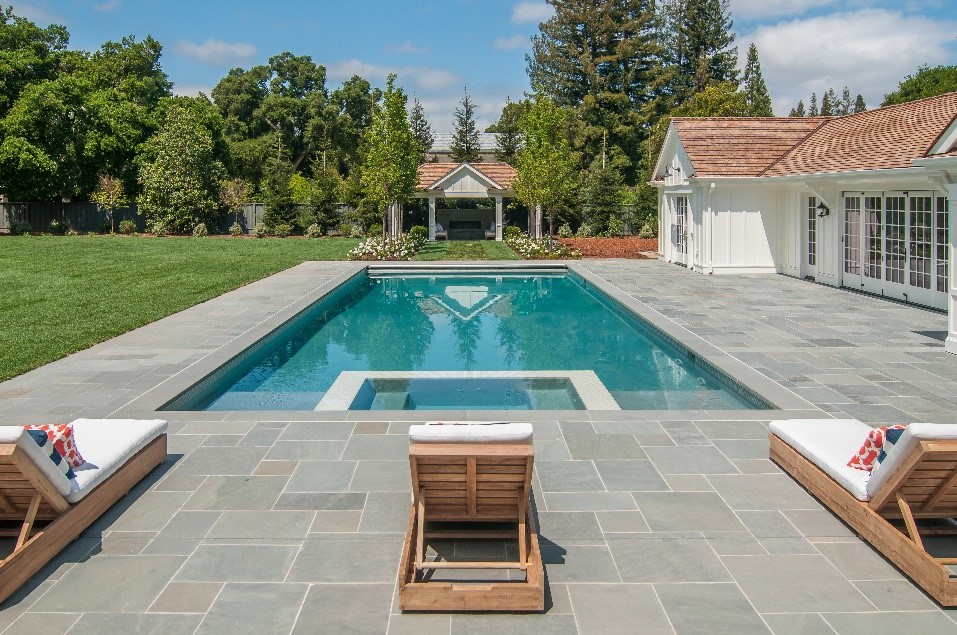
Most people want modern looks, clean lines and colors more in the blues and greys. Porcelain is in right now. For pool decks I have a lot of requests for large porcelain pavers, the bigger the better.
Are you seeing the same trends for in-ground and above ground pool decks?
Pretty much. Silicon Valley tends to be modern. Not that some people don’t still want a more classic stone. When it comes to natural stone a lot of people still like travertine. It has a large coefficient of friction and you can usually sand set it. Plus it can even look modern depending on how you lay it out. We just did a house in Portola Valley where my designer took travertine and laid it in a running bond pattern. Came out looking very modern compared to an ashlar pattern.
How about precast pavers around pools?

We tend to use precast for coping. Not so much for decks. Precast used to be way cheaper but these days it’s almost up to the price of thinner travertine. The thing with natural stone—the ones we commonly use like travertine and bluestone— some of them are thinner so you pay for less material. Of course you need good concrete to mortar those on. With decks we almost always use natural stones.
What’s an eased edge?
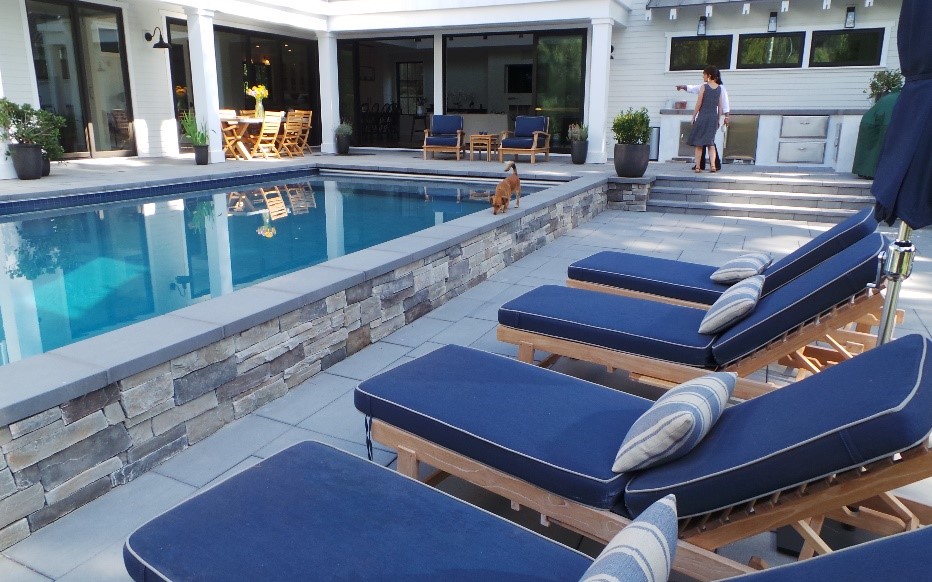
It’s a softened surface on the side of stone that shows an edge like you see for coping or stairs. Straight edge is factory sawn with hard ninety-degree angles. Bullnose is that smooth arc. And eased edge is in between.
Is bullnose pool coping still popular?
Much less. A lot of my customers are asking for modern and that tends to be straight edged.
Why would someone want to choose natural stone for coping or pool decks?
Beauty. Natural stone is far more beautiful than any prefabbed product. It can create problems because it lacks the color uniformity some people are looking for. But those are rare. Almost all the big projects now are using natural stone in some capacity.
What’s the deal with saltwater pools and how does that affect stone choice?
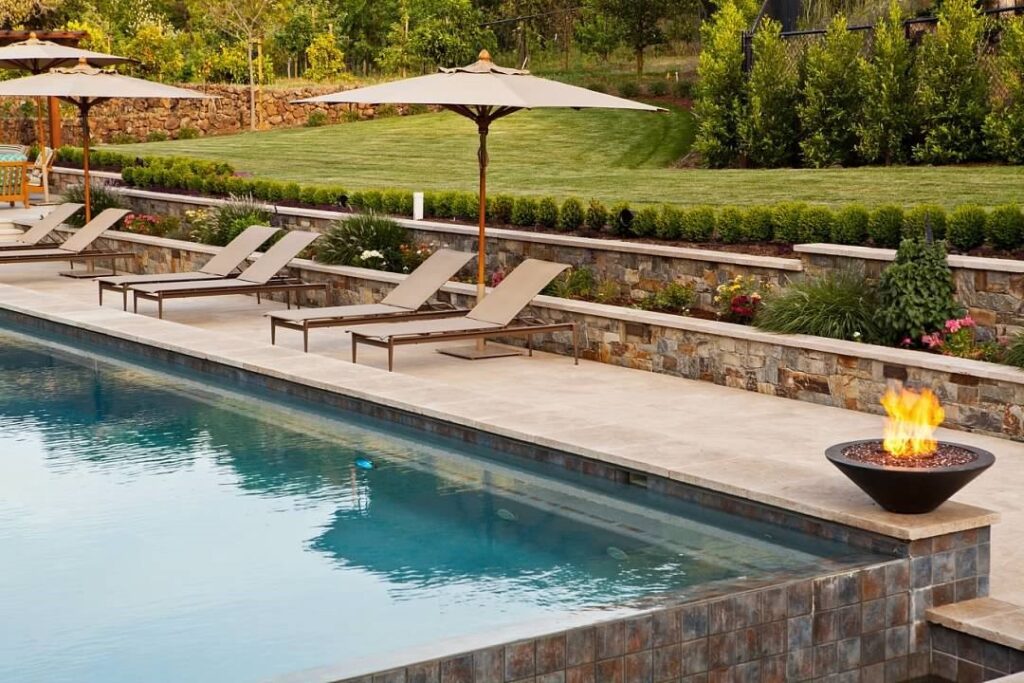
Saltwater pools are definitely gaining momentum. But it’s important to remember that they use sodium chloride, it’s table salt. The chloride part is where we extract chlorine from. So powdered chlorine is all taken from salt. People shouldn’t forget that salt is corrosive. It can present problems with automatic pool covers and some stones. But we only use certain stones around pools anyway. Travertine or blue stone or something like that. The benefit of salt is it makes the water a little softer. But automatic pool cover manufacturers won’t offer a warranty if you use salt water. Also, salt creates a tiny electric charge in the water which then builds up salt crystals on your metal components. Those will cause problems.
What else can be tricky with pools?
Floating decks. We pour concrete underneath, hide the drainage, then use pedestals to float the stone. Very large pieces. No drains on top. Clean modern look. Very expensive.
What kinds of warranty issues do you deal with?
Most of our warranty issues are computer problems, pumps and such. With stone we have hardly any issues. Maybe during installation some stone comes with colors the customer doesn’t like. We just take those out. Some sandstones are softer and might flake a little, with the natural cleft texture. But these days we educate our customers on what to expect. Once stone is in ground we rarely have issues. The natural stuff lasts, it’s been around for millions of years.
Thank you for reading the Design & Build Blog. If you have any questions or a topic you’d be interested in learning more about – leave us a comment below or on our social media. Even better, you can reach out to us directly.


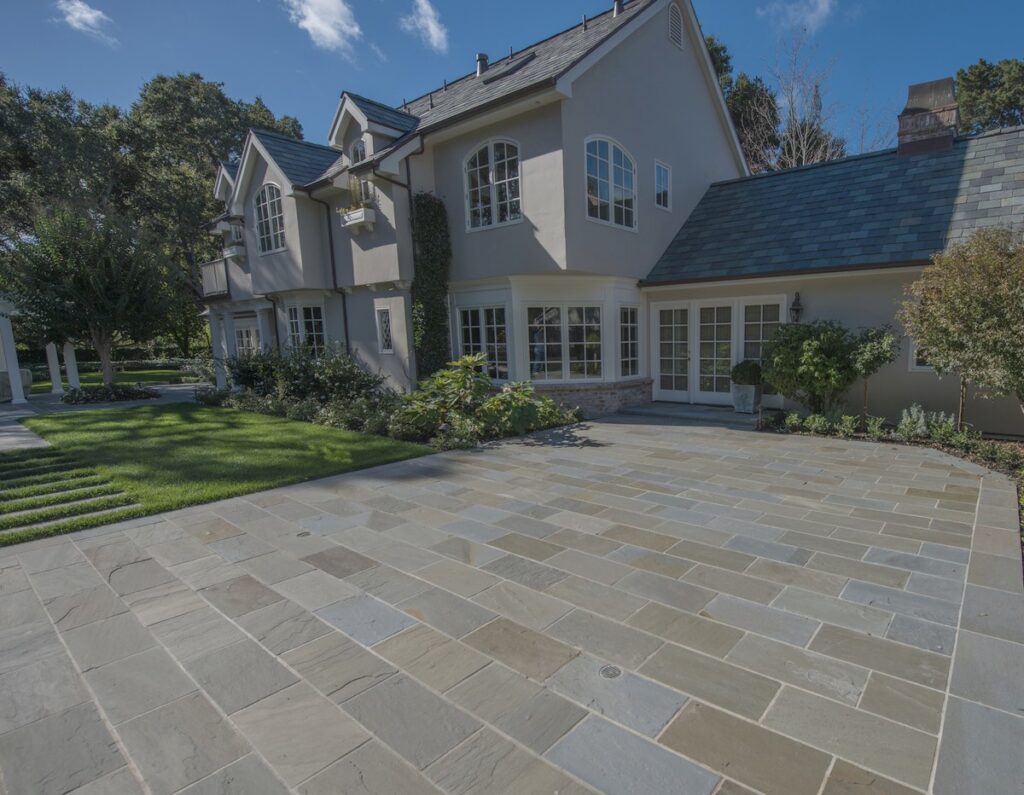
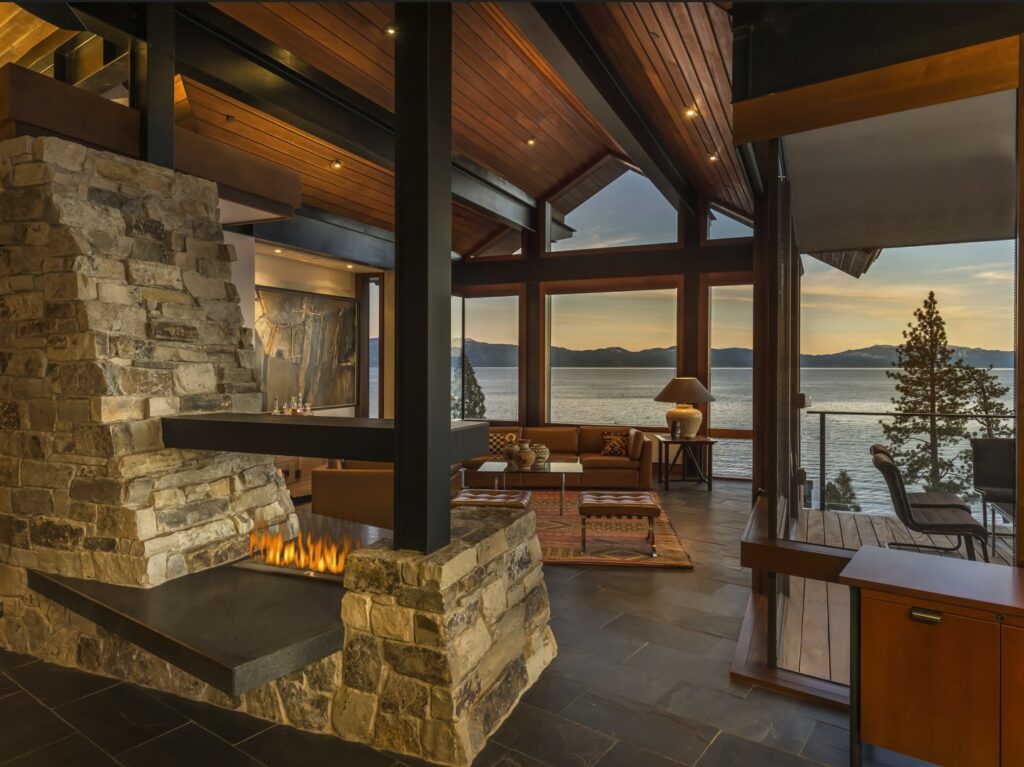
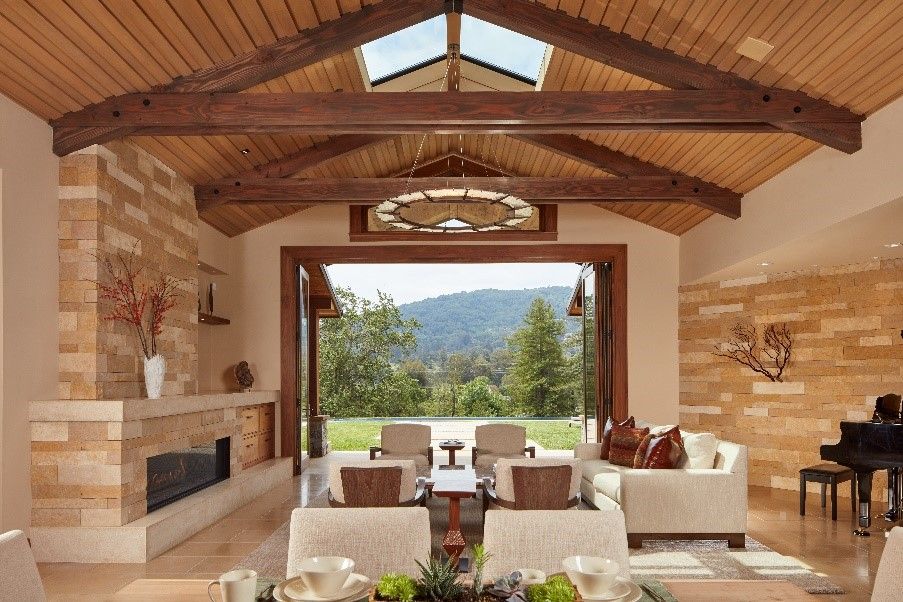
Could you please let me know the colors/materials used in the 4th photo down? The coping, the brick wall, and the water line tile? I’ve been researching forever and love this. thanks so much